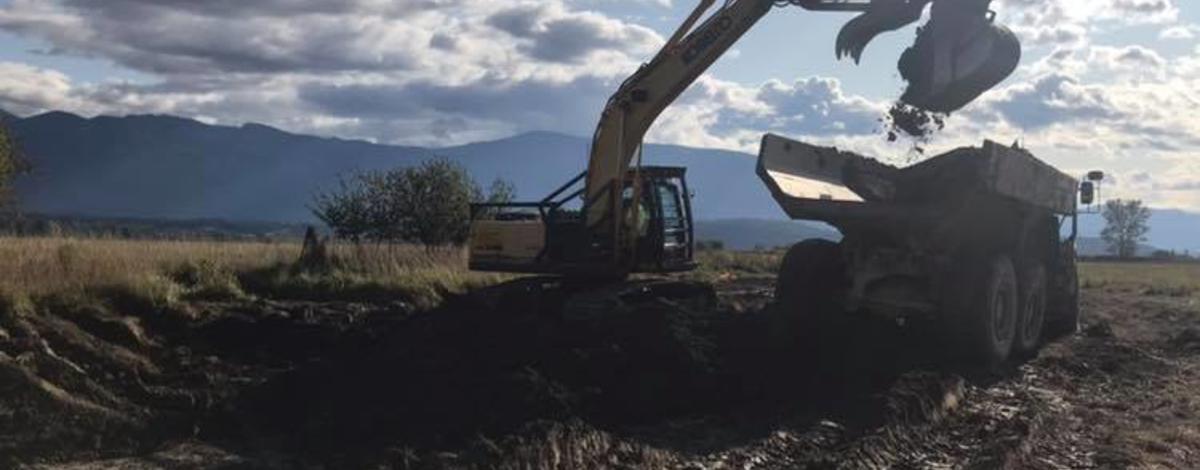An amazing transformation is happening on the small Boundary-Smith Creek Wildlife Management Area, nestled between the Selkirk Mountains and the Kootenai River on the U.S. - Canada border.
From flat fields of deep-seated reed canary grass, undulations in the earth have been restored, wetlands and ponds given access to the river's ebb and flow, and a stream unearthed from its century-long burial. The fine bones of this restored ecosystem lay bare right now, but soon the culmination of several years work will soften its surface with character and life.
Over the past 2 years, many diligent volunteers with the Idaho Panhandle Bees to Bears Climate Adaptation Project have been collecting wildflower seeds to contribute to this transformation. We've collected seeds that love spreading their roots in wetland mud: arrowhead, beggartick, water plantain, bur-reed, camas. We've collected seeds that need the rich soils of streamside forests: violet, avens, willowherb, beebalm, wintergreen, dogbane, false solomon's seal. And we've collected seeds that thrive in wide open sun: goldenrod, fireweed, milkweed, yarrow, aster, pearly everlasting, oregon grape. We sorted the seed from as much of the stems and leaves and chaff as we could, spending hours bent over our kitchen tables. We dried them with care, so that just enough water remained in the seeds to keep them viable, but not enough water remained to shatter them with ice crystals when frozen for storage. And soon we will take these seeds in hand and spread them across their new home on our restored ecosystem.
The drabness of turned dirt and fall dormancy at our site belies the riot of color that will come next year amid our tree and shrub plantings: Pinks of fireweed and milkweed on the sunny rises of our undulations, purples of violets and beebalm along our furrows and streams, and yellows of arrowhead and beggartick wallowing in wetland mud. This diversity of plant life will support a diversity of animal life, everything from bees to bears, giving even more character and life to this special part of north Idaho.
If you are interested in participating in our final seed collection efforts in October, or in planting trees, shrubs, and seeds on the restoration site on November 2nd, contact the Bees to Bears Citizen Science Coordinator Kristina Boyd at kristina.boyd@idfg.idaho.gov.

